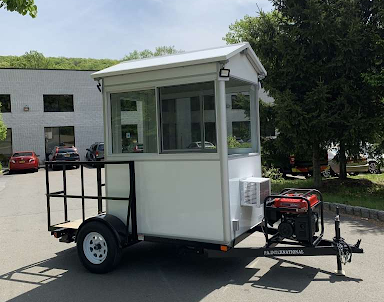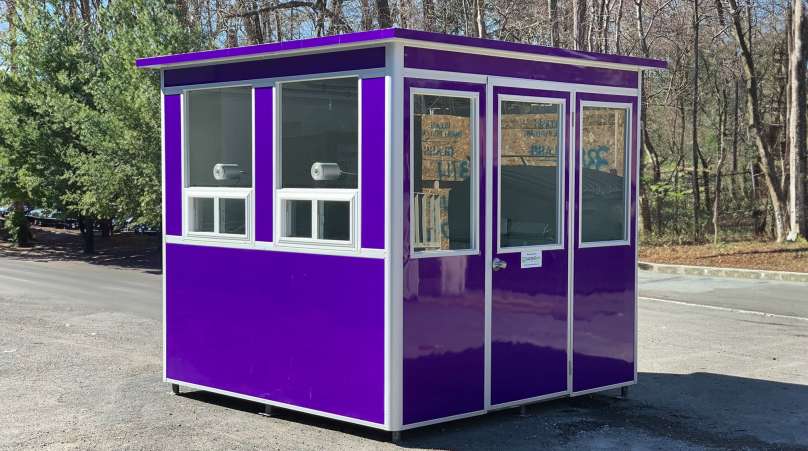Healthcare professionals, administrators, and patients share a common concern for safeguarding the well-being of individuals within the hospital premises. Additionally, given the delicate nature of patient care and the confidentiality of medical information, ensuring the security of healthcare facilities is a significant concern. Consequently, medical institutions must confront various security challenges, including preventing unauthorized entry, safeguarding restricted zones, and securing patient information.
Hospital security booths are pivotal in fortifying security measures within healthcare facilities. These booths are physical barriers that control access to sensitive areas and act as the first defense against potential threats. Access control solutions mitigate risks by regulating entry and exit points, ensuring only authorized personnel can access specific zones. This proactive approach protects patient confidentiality and contributes to the safety of staff and visitors.
Introducing Guardian Booth as a qualified provider of hospital security booths. Designed to meet the unique security needs of healthcare facilities, Guardian Booth offers a robust system that enhances overall security while maintaining a seamless and efficient flow within the hospital environment.
As we delve deeper into the article, we will explore Guardian Booth’s features and benefits, shedding light on how a hospital booth can revolutionize access control in healthcare settings. Join us on this journey to discover a solution that prioritizes the security and well-being of everyone within the hospital ecosystem.
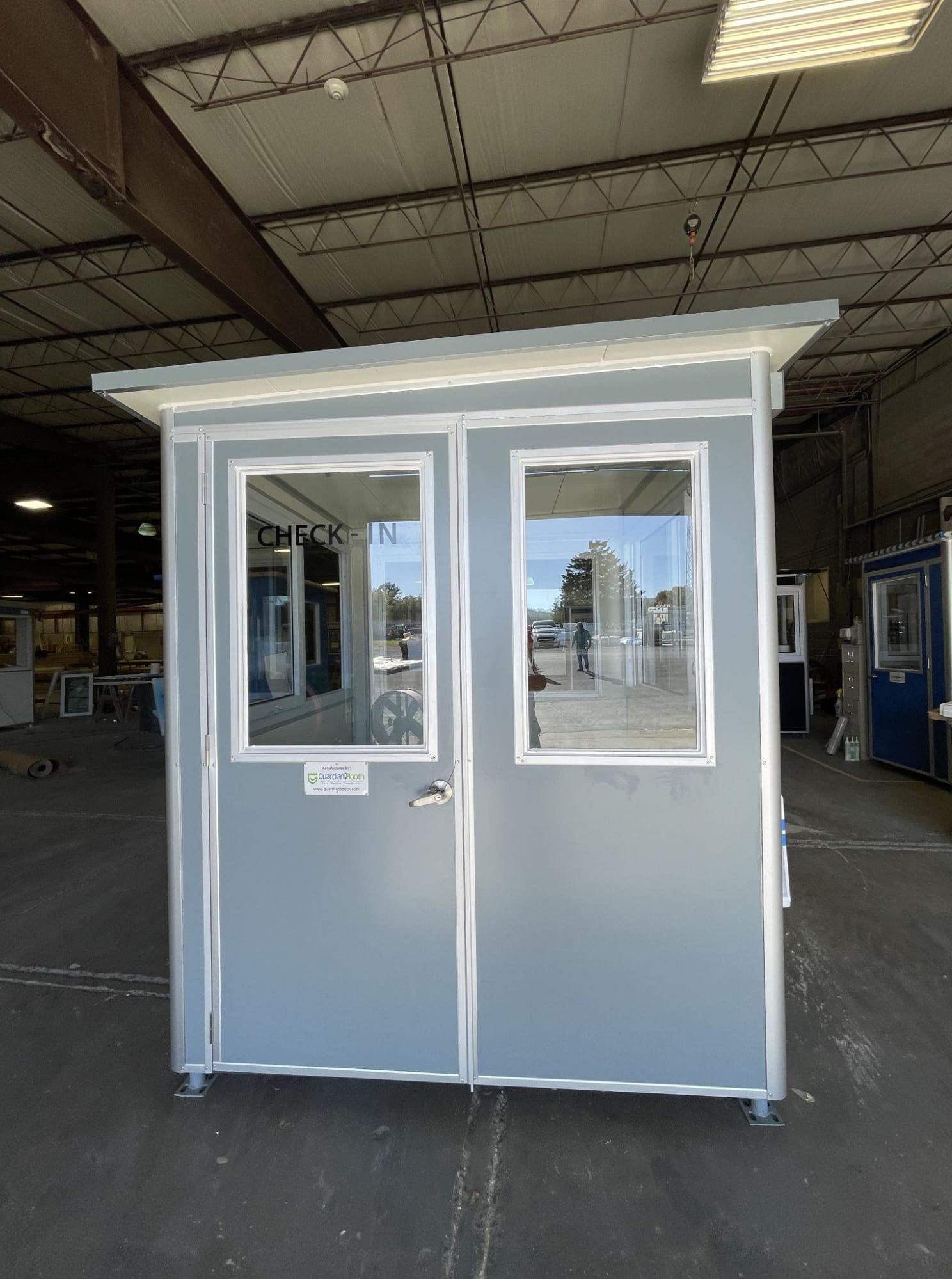
Benefits of Access Control Booths in Hospitals
In the ever-evolving landscape of healthcare security, access control booths emerge as a cornerstone solution, offering many benefits to hospitals seeking to fortify their safety measures. These booths enhance overall security, streamline visitor management, and provide a robust system for controlling access to sensitive areas.
Below are key points highlighting the multifaceted benefits of incorporating access control solutions within hospital premises:
Enhanced Visitor Management and Identification
The role of access control solutions becomes particularly pronounced when it comes to enhancing visitor management and identification processes. These booths incorporate features beyond physical barriers, providing a comprehensive solution for verifying identities, registering visitors, and implementing robust monitoring systems.
Let’s delve into the intricacies of how access control booths contribute to the enhancement of visitor management and identification in hospital settings:
- Access Control Integration: The synergy between access control booths and broader access control systems ensures a cohesive approach to visitor management. Integration with existing hospital databases and security systems allows for seamless verification of visitor credentials, enabling quick and accurate decision-making regarding access permissions.
- ID Verification: Access control solutions act as the first line of defense in verifying the identity of individuals seeking entry to the hospital. Incorporating advanced ID verification methods, such as biometric scans or RFID card systems, these booths ensure that only authorized individuals are granted access.
- Visitor Registration: Streamlining the visitor registration process is pivotal to hospital security. Access control booths facilitate efficient and organized registration by capturing essential visitor information. Whether through self-service kiosks or staff-assisted registration, these booths contribute to a seamless and hassle-free entry process, reducing wait times and enhancing the overall visitor experience.
- Monitoring Systems: Access control booths are equipped with sophisticated monitoring systems that enable real-time tracking of visitor movements within the hospital premises. This feature gives security personnel a comprehensive view of who is in the facility at any given time, allowing for quick response to security incidents. Integrating surveillance cameras and access logs further enhances the monitoring capabilities, creating a robust security ecosystem.
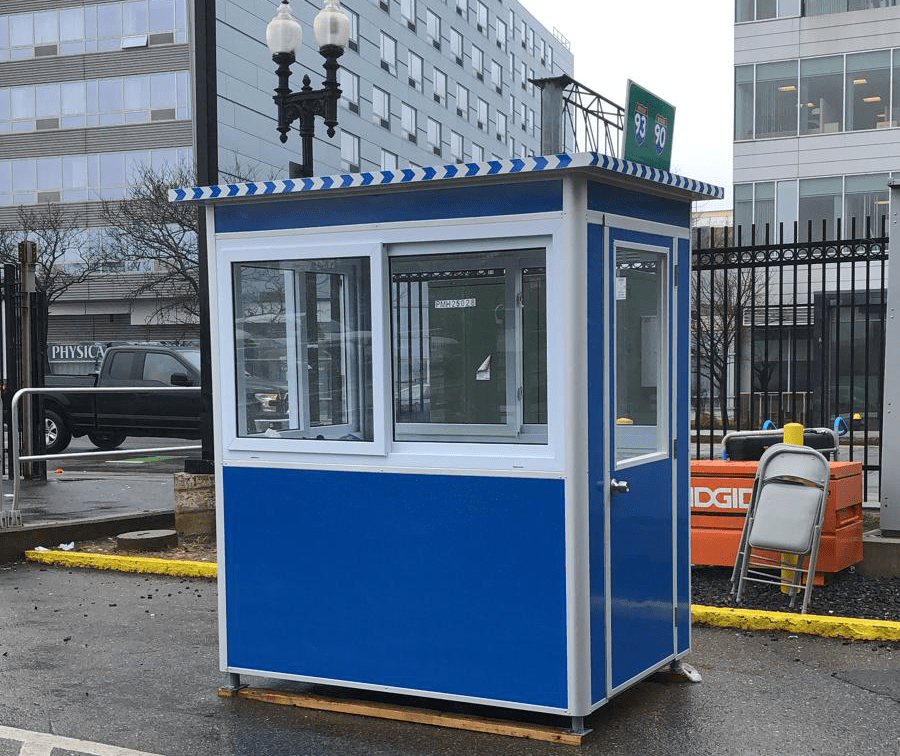
Restricting Unauthorized Access to Sensitive Areas
Access control solutions utilize advanced technologies such as card readers, biometric systems, or key fobs to regulate entry to sensitive areas within hospitals. These booths act as the first line of defense, ensuring that only individuals with the proper credentials can access critical zones like operating rooms, pharmacies, and staff-only areas.
When approaching an access control booth, individuals must authenticate their identity through the designated technology. This authentication process verifies the person’s credentials against the stored data in the system. If the credentials match, the access control system grants permission, allowing the individual to enter the specified area. Access is denied when credentials are invalid or unauthorized, preventing entry to sensitive zones.
By employing this technical process, access control booths significantly reduce unauthorized access, safeguard patient privacy, and mitigate the risk of potential security breaches within hospitals.
Let’s dive into the critical aspects of how access control booths contribute to the stringent control of access to sensitive hospital areas:
- Emergency Room Triage Security: Access control measures ensure strict control over entry to emergency room triage areas. This helps manage the influx of individuals during critical situations, ensuring that only authorized medical personnel can access and prioritize patient care efficiently.
- Laboratory and Research Facilities Protection: Laboratories and research facilities house sensitive equipment, experiments, and confidential data. Access control systems provide a secure barrier, allowing only authorized researchers and staff to enter, preventing unauthorized access that could compromise experiments or sensitive information.
- Vaccine Storage and Distribution Security: With the growing emphasis on vaccinations, access control systems contribute to the security of vaccine storage and distribution areas within hospital facilities. Only authorized personnel should have access to these spaces to prevent tampering and ensure the integrity of the vaccine supply chain.
- Pharmacy Security: Access control booths at the entrance of hospital pharmacies are crucial to prevent unauthorized access to medications and controlled substances. This ensures that only authorized personnel can enter, maintaining the security and integrity of pharmaceutical supplies.
- Patient Records and Information Center: Areas housing patient records and sensitive medical information may require access control booths at the entrance act as a necessary barrier, allowing only authorized staff entry to safeguard patient confidentiality and protect against unauthorized access or data breaches.
- Blood Bank Access Control: Blood banks within hospitals are vital yet sensitive areas that require strict entry control. Access control booths at the entrance ensure that only authorized personnel can access these facilities, preventing potential tampering or unauthorized handling of blood supplies.
Integration with Surveillance and Alarm Systems
Integrating hospital security booths with surveillance and alarm systems is a testament to modern security solutions’ dynamic and interconnected nature. This integration goes beyond the physical presence of access control booths, providing hospitals with a sophisticated framework to monitor, record, and respond to security-related activities.
Here’s how the seamless integration of hospital security booths with surveillance and alarm systems enhances overall security measures within hospital premises:
- Real-time Monitoring Capabilities: Hospitals can monitor entry and exit activities in real-time by integrating access control booths with surveillance systems. Surveillance cameras strategically positioned at access points give security personnel a comprehensive view of individuals entering and exiting the facility.
- Activity Recording and Documentation: The integration facilitates the recording and documentation of all access-related activities. This comprehensive record includes the time, date, and identity of individuals passing through access control points. This recorded data is valuable for post-incident analysis, audit trails, and compliance verification, contributing to a more accountable security infrastructure.
- Automated Alarm Triggers: Access control solutions can automatically trigger alerts in response to predefined security events when integrated with alarm systems. Suspicious behavior, unauthorized access attempts, or deviations from established security protocols can activate alarms. This proactive approach allows security personnel to respond swiftly to potential threats.
- Enhanced Security Response: The seamless integration enables a synchronized response to security incidents. In the event of an alarm trigger or suspicious activity, security personnel can swiftly assess the situation using access control and surveillance data. This integrated approach enhances the efficiency and effectiveness of security responses, minimizing the impact of potential security threats.
- Customizable Security Policies: Integrating access control booths with surveillance and alarm systems allows hospitals to define and customize security policies. Whether it involves setting specific alarm triggers, adjusting monitoring parameters, or integrating with existing security infrastructure, this customization ensures that the security framework aligns with the unique needs and challenges of the healthcare environment.
Emergency Response and Crisis Management
Access control solutions are integral to routine access regulation, facilitating effective emergency response and crisis management. These booths are designed to go beyond traditional security measures, incorporating features that enable quick and coordinated responses during critical situations.
Let’s explore how hospital security booths contribute to hospital emergency response and crisis management:
- Panic Buttons for Immediate Assistance: Access control booths can have panic buttons that immediately trigger assistance during emergencies. When swift intervention is crucial, these buttons allow individuals operating the booths to alert security personnel or emergency response teams. This rapid communication channel ensures that help is mobilized promptly, reducing response times during critical incidents.
- Intercom Systems for Real-time Communication: Integrating intercom systems within access control booths facilitates real-time communication between operators and individuals seeking access. This feature is instrumental in conveying urgent instructions, providing guidance, or coordinating emergency evacuation procedures. The seamless communication channel enhances the overall responsiveness of the hospital’s emergency management system.
- Communication Capabilities for Coordinated Efforts: Access control solutions act as communication hubs, connecting stakeholders during crises. By integrating with hospital-wide systems, they disseminate crucial information cohesively. Additionally, these booths can serve as central check-in or outdoor meeting points, enhancing their role in organized emergency responses within hospitals.
- Emergency Evacuation Protocols: Access control booths, equipped with advanced technological setups such as card readers and biometric systems, are pivotal components in the comprehensive implementation of emergency evacuation protocols within hospital premises. While the booths do not enforce protocols, they play a crucial role by providing staff with real-time access information. This information empowers staff to coordinate and guide individuals effectively, ensuring an organized and controlled evacuation process. The strategic integration of access control technology, designated evacuation spaces, and well-trained staff collectively contributes to preventing panic, maintaining order, and enhancing overall safety during emergency evacuations.
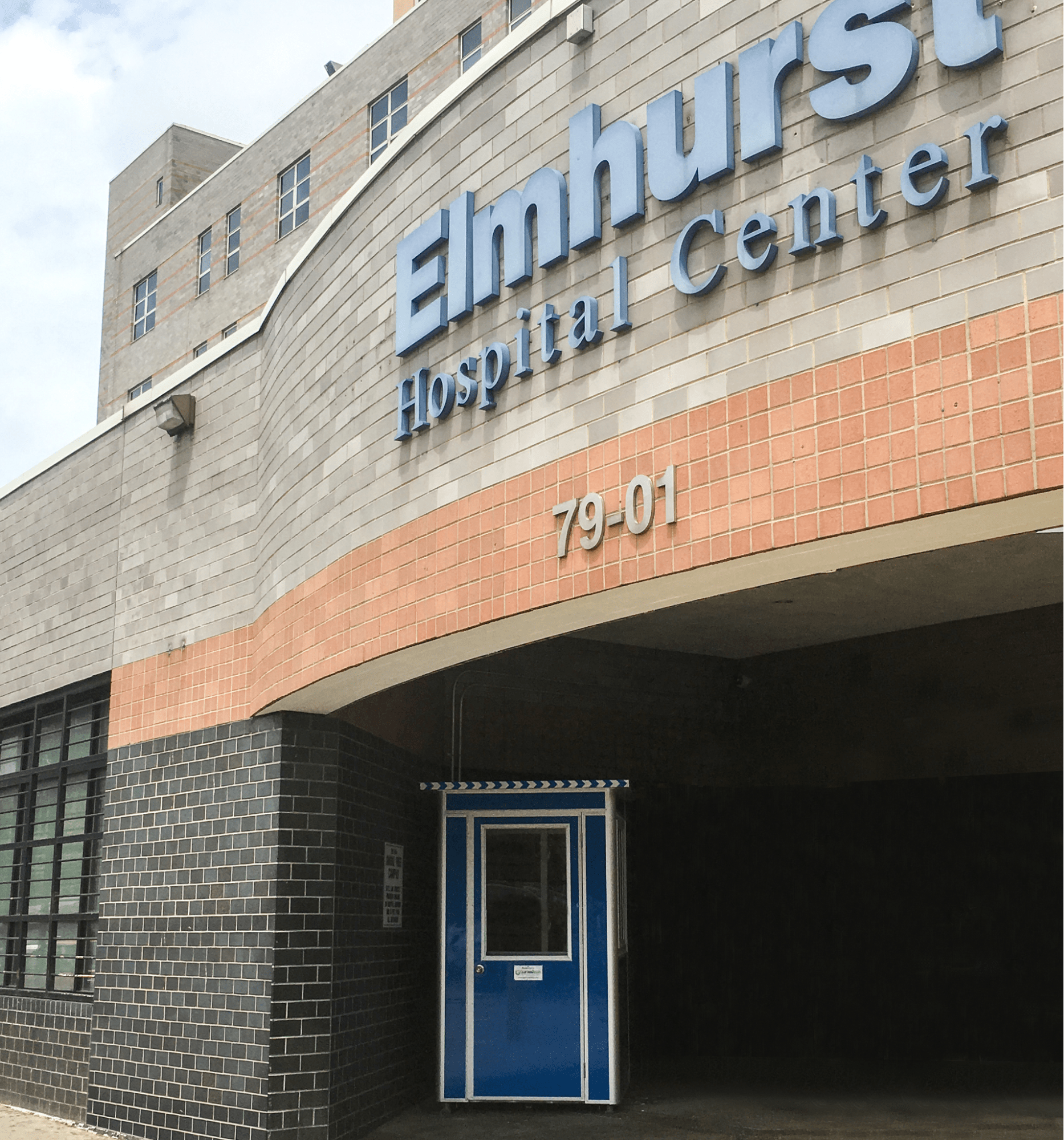
Customizable Solutions for Hospital Security Needs
In hospital security, a one-size-fits-all approach falls short of addressing the diverse and unique needs of different healthcare facilities. Recognizing this, hospital security booths become truly valuable when they offer customizable solutions tailored to specific hospital security requirements.
Guardian Booth stands out as a beacon, providing various options beyond standard configurations. Let’s explore the customization options available for hospital security booths and how Guardian Booth caters to the individualized security needs of hospitals:
- Flexible Size and Layout: We offer customization options for size and layout, ensuring seamless integration with the unique architecture of each healthcare facility.
- Tinted Windows for Privacy: We offer the option of tinted windows, which enhance privacy for sensitive areas and contribute to a secure and confidential hospital environment.
- Outside LED Spotlights: Optional outside LED spotlights enhance visibility day and night, acting as a deterrent and facilitating efficient monitoring of access control points.
- Technology Integration: Streamlined technology integration with automated alarm systems that promptly alert to suspicious behavior, averting potential escalations, and access control booths featuring intercom systems for instant emergency communication. Our solutions are highly adaptable, seamlessly integrating with existing technology infrastructure, including electronic medical records, surveillance, and alarm systems, ensuring a cohesive and efficient security framework.
- Swift Access Control Override: We provide a secure override mechanism for authorized personnel to access predefined zones quickly, ensuring efficient emergency response.
Integration with Existing Security Infrastructure
Guardian Booth stands out for its expertise in providing solutions that effortlessly integrate with various security technologies, enhancing overall surveillance and access control. Here’s how hospital security booths seamlessly integrate with existing hospital security infrastructure:
- CCTV System Integration: Our booths are designed to integrate seamlessly with closed-circuit television (CCTV) systems. This integration allows for a comprehensive approach to surveillance by combining access control data with visual monitoring.
- Biometric Scanner Compatibility: Recognizing the importance of advanced authentication methods, our booths support easy integration with biometric scanners. Whether fingerprint, iris, or facial recognition, the compatibility with biometric technology adds an extra layer of security to access control.
- Access Control Override with Existing Systems: Our solutions are designed to work seamlessly with existing security systems, allowing for secure access control overrides when needed. This interoperability ensures authorized personnel can quickly navigate the hospital environment during emergencies or specific situations without compromising security protocols.
- Interoperability with Alarm Systems: Integration with alarm systems is a hallmark of our approach to security. Access control booths can seamlessly communicate with existing alarm systems, triggering alerts in response to predefined security events.
- Compatibility with RFID Card Systems: We understand the prevalence of Radio-Frequency Identification (RFID) card systems in hospitals. Our solutions are compatible with RFID technology, allowing for easy integration.
- Customization for Specific Technology Preferences: We recognize the diversity of hospital security technologies. Their solutions are customized to accommodate specific technology preferences, ensuring access control booths align seamlessly with each healthcare facility’s existing technological landscape.
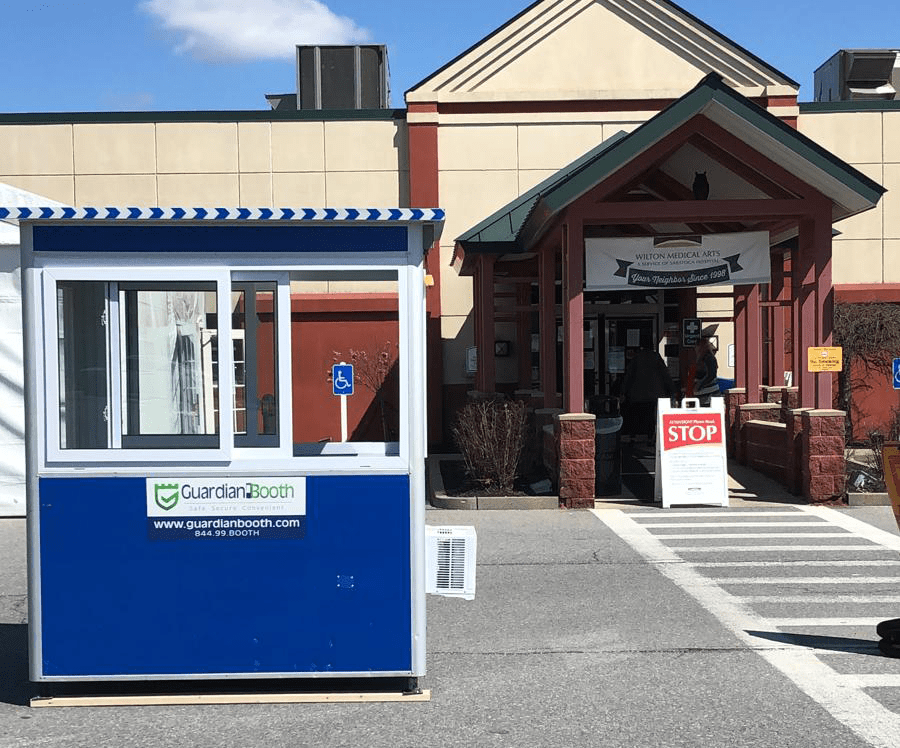
Compliance with Healthcare Regulations
Access control solutions are indispensable assets for healthcare facilities striving to comply with stringent regulations and standards. The overarching goal is to ensure the security and confidentiality of patient data, aligning with critical regulations like the Health Insurance Portability and Accountability Act (HIPAA). These booths act as a strategic barrier, controlling access to areas where sensitive patient information is stored or processed, significantly protecting patient data, and fulfilling regulatory mandates.
Maintaining confidentiality is paramount in healthcare, and hospital security booths play a pivotal role in upholding this principle. By physically restricting unauthorized individuals from entering areas where confidential conversations, medical consultations, or patient interactions occur, these booths align with regulations that prioritize patient privacy. This emphasis on confidentiality enhances security measures and fosters an environment where patients can trust that their personal and medical information remains safeguarded.
Access control booths contribute to compliance by enforcing stringent visitor management protocols. Streamlining the registration and verification of visitors ensures that only authorized individuals gain access to healthcare facilities. This controlled approach to visitor access enhances overall security and aligns with regulations emphasizing the importance of maintaining a secure and controlled environment within healthcare premises. Additionally, creating detailed audit trails by these booths is a valuable tool for accountability, providing hospitals with the means to verify and demonstrate compliance during regulatory audits and assessments.
Why Choose Guardian Booth
Choosing Guardian Booth for hospital security booths is a strategic decision grounded in the company’s unparalleled expertise in addressing the unique challenges of healthcare security. With a deep understanding of the intricate dynamics within hospitals, Guardian Booth brings specialized knowledge to the table. This expertise ensures that their security solutions are tailored to meet and exceed the stringent requirements of hospital security, offering a level of proficiency that sets them apart in the industry.
Guardian Booth’s hallmark lies in its commitment to quality craftsmanship. The construction of its hospital security booths reflects meticulous attention to detail, durability, and functionality. Built with robust materials and incorporating cutting-edge technology, Guardian Booth’s solutions are designed to withstand the demands of continuous use. This commitment to quality ensures that hospitals receive security booths that provide a secure and reliable access control infrastructure, contributing to the overall safety and well-being of the healthcare environment.
Guardian Booth’s crucial strength is its customizable Nature, which allows hospitals to tailor security solutions to their needs. From varying sizes and layouts to features like tinted windows and outside LED spotlights, Guardian Booth provides a range of customizable options. This flexibility enables healthcare facilities to seamlessly integrate security measures that align with their individualized requirements, ensuring that Guardian Booth’s solutions are not just standardized but adapted to the unique security challenges faced by each hospital.
In every aspect, Guardian Booth exhibits a steadfast commitment to customer satisfaction. The company prioritizes understanding hospitals’ distinct security challenges from initial consultation to implementation. By collaborating closely with clients, Guardian Booth ensures that the final solution meets and exceeds expectations. This dedication to customer satisfaction is a testament to Guardian Booth’s reliability and effectiveness as a security partner, offering hospitals a comprehensive and trustworthy solution for their evolving security needs.

